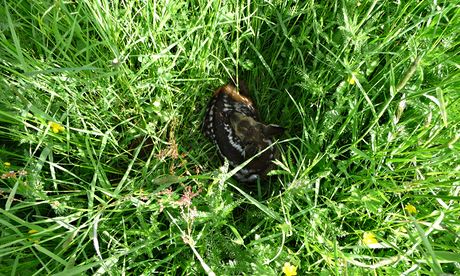
A German wildlife rescue project is deploying small aerial drones to find young deer hiding in tall grass and protect them from being shredded by combine harvesters cutting hay in spring.
According to project spokesman Rolf Stockum, the pilot scheme has shown great promise in spotting the young animals. About 100,000 of them fall victim in Germany every year to the large agricultural machines, he said on Friday.
Five small drones fitted with combined digital and infrared sensors that can detect colour patterns and body heat were trialled in the southern state of Bavaria.
When spotted the young deer are fitted with beacons that emit radio signals so that farmers, when they later do the spring mowing, can find and avoid them as they noisily rumble across the grasslands and fields.
Germany's agriculture ministry – which is backing the project with €2.5m (£2m) – this month alerted farmers to the threat as mild April weather ushered in the grass-mowing season in much of Germany.
According to Stockum, the problem was that deer often hide their fawns in tall fields near the edges of forests to protect them from natural predators.
"Evolution has created a very effective way to protect the fawns, which do not yet have a sense of smell – they instinctively stay exactly where they are placed," he said.
This made it very hard for farmers or even experienced wildlife trackers to spot the animals, leading to horrible accidents, said Stockum.
"Unfortunately, there are many years in which the time when meadows are cut in spring coincides with the time when deer drop their offspring … and then many animals lose their lives."
Stockum said this was also traumatic for the farmers and machine operators involved and, furthermore, polluted the cut grass, which was used as livestock feed, with shredded deer remains.
Farmers have in the past made visual inspections of grass areas or used trained dogs, and more recently many have employed hand-held infrared devices, to find the deer, said the spokesman.
However, Stockum said, using drones in co-ordinated campaigns with crowds of volunteers in the weeks before hay-cutting would cover far larger areas with greater accuracy and therefore save many more fawns' lives.
AFP Berlin
http://www.theguardian.com/world/2014/apr/25/german-drones-protect-young-deer-combine-harvesters
No comments:
Post a Comment